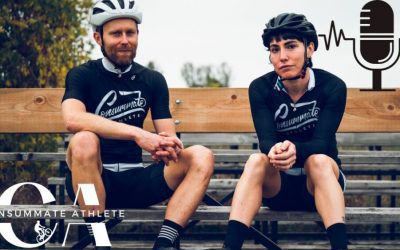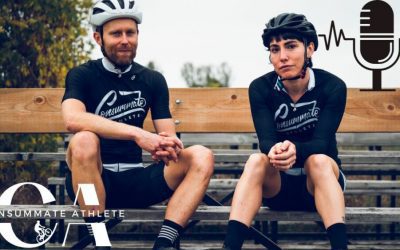Skiing, Cross-Country, Shooting, Marksmanship, Target Shooting
Interview with Daniel Markert a biathlon athlete. He is also currently the State Biathlon Coordinator and a competitor for the California National Guard biathlon team. His expertise is in taking novices into both competitive shooting and the sport of biathlon (Nordic skate skiing and shooting). We also talk about how he prepares for skiing and shooting while living in Coastal California.
Don’t forget to check out
www.wideanglepodium.com for show info, other podcasts and to see if becoming a donating member of the network is for you.
//html5-player.libsyn.com/embed/episode/id/4946590/height/150/width/320/theme/standard-mini/autonext/no/thumbnail/yes/autoplay/no/preload/no/no_addthis/no/direction/backward/no-cache/true/
1) How do you get into Biathlon ? Tell us your story
-> exposure at big bear / mammoth mtn
I saw an open invite on Facebook for the California National Guard Biathlon program. During the peak mobilizations for Iraq and Afghanistan, participation had fallen when the older guys retired out. I was three years into a mid life fitness transformation after deploying to Afghanistan as a combat advisor. I had started training Scott Sonnon’s TACFIT system in 2010 on my way overseas and dropped 30 pounds and really improved my strength and movement skills. So I though what better test of TACFIT than learning a new skill, Nordic skate skiing, and then competing in a race that includes having to rapidly recover in order to shoot accurately.
a. What does biathlon teach: Nordic skate skiing is a whole body strength-endurance exercise. Significant lower body and core strength are needed for hill ascents and cardiovascular aerobic endurance is obviously necessary for sustained speed on the snow over the many kilometers and multiple days that a match entails. The sport teaches you several physical and mental things: to pour effort into technique because otherwise you bleed too much energy and gas out; also to rapidly recover breath and heart rate to clear your mind for accurate and speedy shooting.
Tell us about the sport:
The sport. Biathlon is the hardest thing I have ever done. The cold, the fatigue, the social pressure of competition and being ranked. I was a competitive swimmer and water polo player in my youth, competing in water polo at the collegiate level. To develop the skill of skate skiing you have to have snow, so that is a challenge for this of us who live in mild climates. My fitness training definitely helped. Using TACFIT to restore full range of mobility, the emphasis on movement technique, and the protocols for conditioning the neuroendocrine system for rapid recovery allowed me to pick up the skate skiing in only a few days. In preparation for the next season I used a combination of kettlebell training, Strong First Simple and Sinister, and Clubbell strength training as well as moderate running for developing the aerobic base. Definitely a lot of leg, glute, and hip work. We have special roller skis too to practice the ski movements on pavement. It is not the same as snow obviously, but you can work most of the same motor patterns. Biathletes are good endurance athletes so many do running and cycling. I just do some running.
-> How does your experience with the military play into this ?
b. Military aspect: biathlon is supported by the military to develop personnel with high levels of physical fitness, mental stamina, superior rifle marksmanship skill, and skill at cross-country winter mobility. Personally, I am an infantry officer, so close combat skills are my specialty and improving them in the harsh environment of sub-arctic or alpine winter conditions is personally satisfying.
2) The sport seems like it would be hard to train for and perfect conditions tough to find ( bobsled / ski jump?) —> How do you train ? (sports etc. )
I was attracted to biathlon to test my newfound athleticism after three years of TACFIT. Training for ‘3 – dimensions’ … letting older body recover between workouts.
The progressive motor complexity development in TACFIT worked as advertised, I picked up a new skill rapidly. The rapid recovery from stress arousal also worked as advertised. I also discovered I still had a long way to go. After years of seated culture and bi-linear exercises of pushups, chest presses, situps, and running, I had a lot of maladaptations, imbalances, and tissue restrictions.
I really improved my skiing performance this last season by focusing more on compensation work than strength work. Specifically hips and lower back. My training week would something like this:
No intensity joint mobility day using Into Flow or Recuper8, a low intensity yoga compensation day, using Scott Sonnon’s 6 Degree Flow or his Progressive Yoga series, a moderate intensity day of a Clubbell or Kettlebell strength or strength-endurance circuit and a 3 mile run at 70% max heart rate, and then a high intensity day with Clubbell or Kettlebell circuit and every other week some 30/60 sprint intervals.
The closer to competition season, I would add in dry fire drills during recovery periods. Some of the circuits have bodyweight exercises as well. Some of the best exercises are lunges, Speed Skater Lunges to mimic the skate skiing motor pattern and side lunges to compensate. My go to Clubbell exercise is the Double Front Swipe. It really mimics the upper body to lower body connection of skiing, especially double poling on flat snow. I use the six time protocols of TACFIT 26 to condition for mental toughness. 20/10*8+1, 4/1, AMRAP, EMOTM, [90/30*5]2 and AFAP.
Cycling through those six protocols in a month conditions for rapid recovery, attentional switching, and mental toughness. Work capacity gets developed mostly through the aerobic conditioning at 70% heart rate max on the running, roller skiing, and skate skiing on snow. But that 4/1 and 90/30 TACFIT protocol also devlops capacity pretty well.
How to help low back pain?
-> side lunges (weighted or unweighted )
->
-> where to go ? Indoor range, usually pistols, can print out circles/target
-> Biathlon uses bolt action 22 caliber …
-> Finding range to lay down can be tough
-> dry-fire => to relax/load / routine / sight-focus / when pull trigger nothing moves
-> Practice the attentional switch broad-narrow / internal to external
-> tips for First time shooting
-> take a class/get a coach
->
4) XC Skiing (Skate) … how to get ready for if and when winter comes ?
– roller skis (uphill with run down )
– Practice getting HR up and shooting … gradually increasing the training load
WHERE
– Auburn / Truckee / Tahoe –
– Washington state has one in cascades
– Oregan
– vermont has one (national guard)
– minnesota
– Michegan
Shooting
. Rifle marksmanship is rifle marksmanship, so the fundamentals of shooting a biathlon rifle are pretty much the same. We use high end Anschutz .22 caliber bolt action rifles with heavy precision barrels and match grade ammunition. They are very accurate. there are more affordable biathlon rifles out there, but if you wanted to get started you could practice with any decent .22 caliber sport rifle. Biathlon targets for match competition are a series of 5 steel circles, black on white background. The diameter of the target is 8cm and they are 50 meters distant. In the prone you have to hit the 4cm inner circle, that you can’t differentiate at 50 meters. All you see is the 8cm circle. That is a small target. When standing, the targets are set for the 8cm circle to fall down if hit anywhere in the 8cm. There is a metallic clang when you hit it and it fall over replaced by a plastic white circle. It is very satisfying to get a hit. Your ideal facility will have biathlon targets, failing that you can post paper targets, and you could even scale them for 25 meters by printing them out at half size: 4cm with a 2cm inner circle. The other key thing in orange is the ability to shoot both prone and standing. Many civilian ranges do not allow prone shooting. They have benches for seated shooting or you stand. If biathlon is something you want to try as a novice, I highly recommend searching for a biathlon club and signing up for a clinic and even private coaching. I got a ski coach when I started and got an hour of technique and then practiced. There are not many biathlon clubs, in California we have two, one in Tahoe and one in Mammoth, but only Tahoe has a permanent biathlon facility.
Best exercises / routines / exercises to enhance mental toughness and work capacity.
– TacFit – varies the intensity , have a no intensity day (joint day, mobility) under 40% MHR + low intensity for wrapping of muscles (Fascia) + high intensity (80-100%)
– built in progressions / levels of difficulty
– there are 6 Degrees in the base routine that help take through technique, breath and working on procedural memory to recover — recover automatically under duress.
– concept of a wave for your periodization going from low to high peaks




